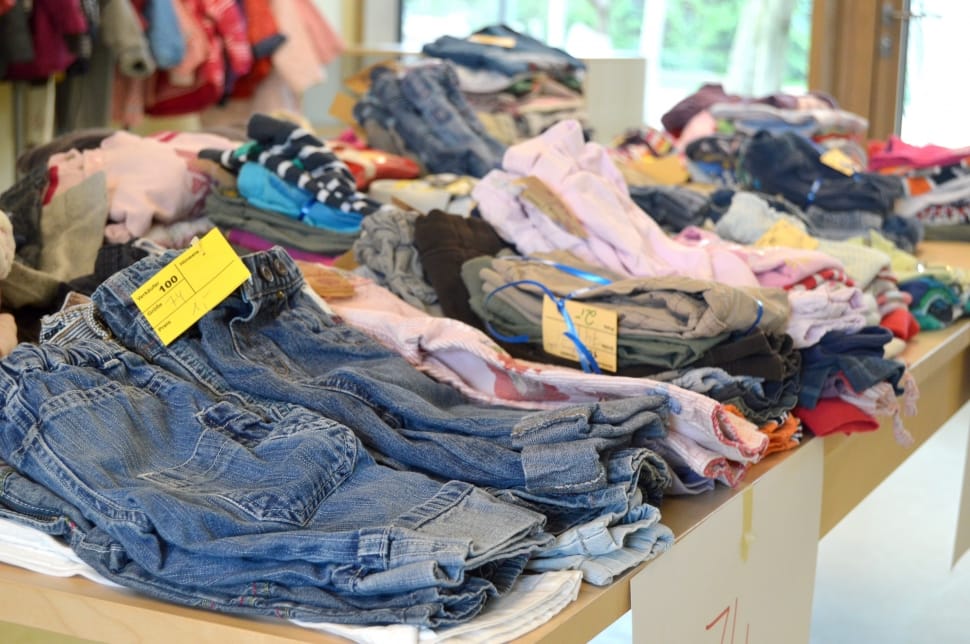Selling used clothing instead of throwing it away is seen as a solution to many of the planet’s problems that appeals to brands and consumers alike. For brands, it alleviates the pressure they’re under to find more sustainable ways to manufacture and market apparel; for the environmentally conscious consumer, it means they’re helping the planet and they feel virtuous. But are we all deluding ourselves?
ThredUp and GlobalData analysts estimate the secondhand goods market could reach $350 billion globally and $70 billion in the U.S. by 2027. Last year, second hand sales were $177 billion globally and $39 billion in the U.S., according to that report.
“Our mission is to inspire a new generation of shoppers to think secondhand first,” ThredUp President Anthony Marino said in a phone interview. “We are quite pragmatic about what impact resale can have on a trillion-dollar apparel industry that’s built upon producing garments new, then selling as many as you can at full price, then what you can’t sell at full price selling at a discount, and what you can’t sell at a discount doing something else.”
Consumers do see buying used items as environmentally friendly, and brands from H&M to Lululemon tout their resale programs as key to their sustainability goals. If every consumer this year bought just one second hand garment instead of a new one, it would lower CO2 emissions by more than 2 billion pounds, equal to taking 76 million cars off the road for a day, and save some 23 billion gallons of water and 4 billion kilowatt-hours of energy, according to ThredUp’s report. That’s a lot of saving!
The assessment takes into account the footprints of both new garment production (raw material extraction, yarn production, fabric production, dyeing, cutting and sewing, transportation, washing and disposal) and the secondhand journey (transportation at various stages, cleaning, warehousing, washing and disposal), the spokesperson said.
This optimistic assessment was founded on the idea that consumers could be re-trained in their habits, and Marino says they were “very pragmatic and realistic about the time it takes to change behavior.” But, he adds, “The industry is still massive and has had these practices ingrained for generations.”
So, can the consumers be swayed to change their habits? “I think that’s possible, but I don’t know about this century,” he said.
ReCircled CEO Scott Kuhlman, on the other hand, believes that resale’s potential in correcting fashion’s poor environmental record is overblown. He believes that resale does have a small role in improving the apparel industry, but is skeptical that it can drive textile circularity and make any real changes.
ReCircled’s initial expectation was that about a third of used clothing coming in could be resold, but to their surprise, the actual percentage is only in the low single-digits, Kuhlman said in a video conference interview. “We thought a lot of this stuff would be resellable, and it’s not. It’s just not to the level of quality that anybody would agree to buy,” he said. “And if you look at it environmentally, how does it make sense for you to ship a used sweater? You send it to us, we spend the time, the energy, the money, the water, the everything else to clean and repair it. And then we ship it back to somebody else. We’ve measured all that, financially and environmentally, and it doesn’t make sense at all.”
So, in the end, what has become clear is that reselling apparel is not as profitable for manufacturers and not as beneficial to the planet, as initially thought.
Instead, most of the used garments ReCircled takes in are repurposed. The company uses some to manufacture yarns, though even that requires a used textile to be of a certain quality.
Still, much of the clothing is not going to waste; it is now going into production of composites for use in building materials like countertops, flooring, wall systems and doors, and home goods like clothes hangers.
“These hangers are 90% textile waste. For a retailer, imagine a day where all of your hangers are not plastic, they’re from old textiles,” Kuhlman said. “This idea of upcycling and recycling is all based upon time. How much time is everybody willing to put into this garment, to take it to its next life? We’re starting with the end in mind, which is no landfill, and then work backwards from there.”












